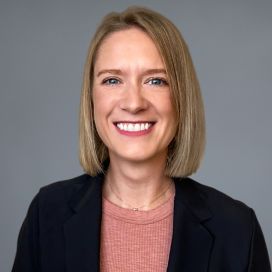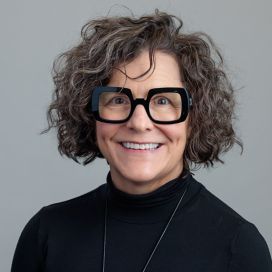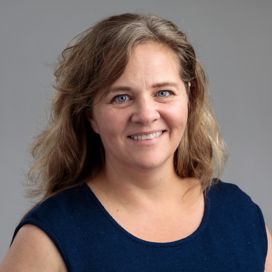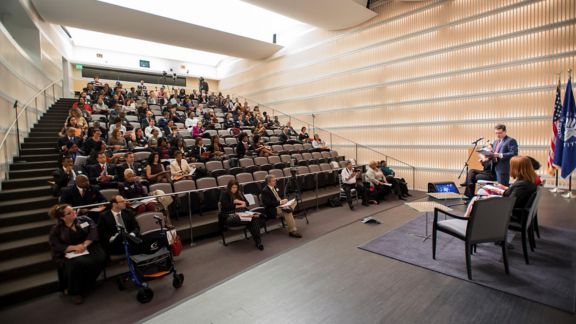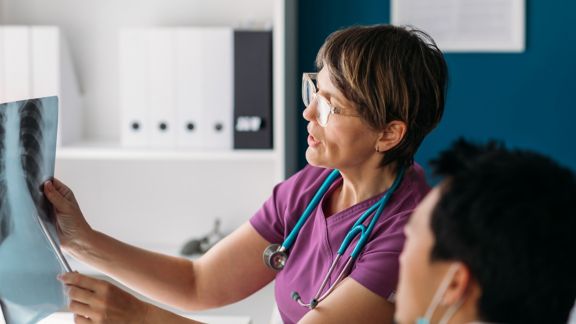How Right Now / Qué Hacer Ahora

Problem
The COVID-19 pandemic caused feelings of sadness, fear, anxiety, anger, and loss.
Recognizing the mental health burden and potential behavioral impact that countless Americans faced—from unemployment, the loss of loved ones, the isolation that came with social distancing, and the possibility of contracting the virus—public health experts at the Centers for Disease Control and Prevention (CDC) and the CDC Foundation tasked NORC with developing a communication campaign as well as new coping tools to help those in need.
Solution
NORC helped curate and promote targeted mental health resources from trusted sources.
With technical guidance from CDC and funding from the CDC Foundation, NORC partnered with Burness Communications, Inc., and The Media Network (TMN Corp) to create How Right Now/Qué Hacer Ahora (HRN/QHA), an award-winning mental health communications campaign. Launched in August 2020, HRN/QHA was initially designed to provide mental health and emotional support to people during the pandemic through targeted messaging and a website that links to support resources. Since then, the campaign has evolved to support needs that continue to emerge as the pandemic has waned.
Audiences
In the initial phase of the campaign during COVID-19 pandemic, HRN/QHA focused on reaching
- People with preexisting mental and physical health conditions
- People experiencing violence
- People in economic distress
- Adults 65+ years old and their caregivers
Starting in 2022, the campaign shifted to focus on three new audiences identified through research as being most vulnerable to emotional health challenges: people who identify as African American or Black, Hispanic or Latino, and/or American Indian and Alaska Native.
In 2024, HRN/QHA pivoted to focus on public school K-12 teachers and school staff, given their increased stress and declining mental health since the pandemic. Across each phase, NORC conducted formative research, which led to the development of targeted messages, materials, and partner engagement to reach these audiences.
Formative Research
Across all phases of HRN/QHA, our multidisciplinary team conducted rapid formative research that was both quantitative and qualitative. Our formative research methods included environmental scans, social listening, online focus groups with priority audiences, partner needs assessments, and surveys of more than 1,000 people using NORC’s nationally representative and scientifically rigorous AmeriSpeak® Panel.
Message and Material Development
We used the formative findings to develop a brand and culturally appropriate targeted messaging and materials, including graphics, GIFs, social media copy, as well as several award-winning videos of real people talking about their emotional responses to the pandemic and an award-winning video of teachers and school staff sharing how they cope with feelings of stress and burnout in schools.
Partner Engagement and Dissemination
For maximum insight and effectiveness, our team partnered with and listened to the trusted voices of influential local, regional, and national organizations. More than 100 organizational partners—including the notables below—lent their expertise and actively disseminated products and resources to their communities. To drive people to the website, we used a mix of social media posts; radio advertisements; television advertisements in provider waiting rooms; virtual meetings, conferences, and town halls; and texting programs. We also worked with celebrities and influencers to push out our messages.
Result
HRN/QHA increased awareness and resilience.
In its first three months alone, the campaign had more than 42,000 website visits, 320,000 video views, and 25,000 social media engagements. In addition, the campaign doubled the number of partner organizations, significantly expanding its reach.
By May 2024, HRN/QHA had obtained a potential audience reach of more than 704 million individuals across the United States. Notably, an evaluation conducted August 2020 through May 2021 revealed that the campaign had the greatest impact on those who needed help the most—people experiencing violence, economic distress, as well as Black and Hispanic communities. In particular, Black and Hispanic groups initially reported higher levels of stress and were more likely to seek information about how to cope with emotional distress. After being exposed to campaign messages and materials, they were also the most likely to report positive community engagement and increased resilience. These findings are a win for us all and speak to this campaign model's promise for helping people in future health emergencies.
As of December 2024, HRN/QHA had been presented at eighteen national and international health conferences and 21 other meetings, was written about in 13 mini- and full-length reports and six professional journals, and was profiled in a dozen media placements.
HRN/QHA Project Partners
- Addiction Policy Forum
- Alzheimer’s Association
- American Cancer Society
- American Red Cross
- Asociación de Salud Primaria de Puerto Rico, Inc.
- Faces & Voices of Recovery
- Futures Without Violence
- League of United Latin American Citizens
- Mental Health America
- National Alliance on Mental Illness
- National Association for the Advancement of Colored People
- National Latino Behavioral Health Association
- United States Hispanic Chamber of Commerce
- KCGCF
- Minding Your Mind
- Hope Givers
- Rural Schools Collaborative, Inc.
- Regional Youth Adult Social Action Partnership
- OPUA Agency
- Action for Healthy Kids
- Nebraska Department of Education
Videos
Learn More About the Study
Interested in discovering how you can benefit from a similar communication campaign?
Contact Dr. Amelia Burke-Garcia, NORC’s Director of Digital Strategy & Outreach:
Related Tags
Project Leads
-
Amelia Burke-Garcia
DirectorProject Director -
Dani Heide
Senior Research DirectorProject Manager -
Sherry Emery
DirectorSenior Staff -
Jennifer Berktold
Principal Research ScientistSenior Staff
HRN/QHA Project Partners
- Addiction Policy Forum
- Alzheimer’s Association
- American Cancer Society
- American Red Cross
- Asociación de Salud Primaria de Puerto Rico, Inc.
- Faces & Voices of Recovery
- Futures Without Violence
- League of United Latin American Citizens
- Mental Health America
- National Alliance on Mental Illness
- National Association for the Advancement of Colored People
- National Latino Behavioral Health Association
- United States Hispanic Chamber of Commerce




